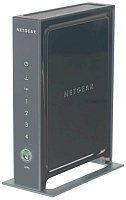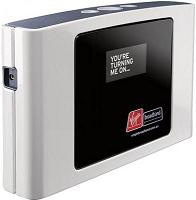WiFi is such a strange beast to work with.
I recently had a customer in a high-set house, who would have the internet dropout fairly often.
The setup was: adsl modem connected to a netgear WGR614 “G” wireless router, 2 WiFi laptops, and a PC downstairs which connected using Wifi (a netgear WG111 USB WiFi adapter).
The wireless router was located at one corner of the reasonable small house, the downstairs PC was almost directly below the router, and the two laptops are in the lounge-room, with the signal having to pass through about 4 thin walls.
I have a similar setup, and have no internet problems.
With the customer, the downstairs PC would work fine, but the two laptops would occasionally lose WiFi signal… When the signal was “re-acquired”, it would show a signal strength of 5 bars (ie very strong signal)…
I tried a few different channels, but that made no difference.
The customer eventually moved the router to a more central place in the house (the kitchen), just 1 room away from the lounge room.
Now, the laptops no longer lose the internet connection, but the downstairs PC can barely connect at all.
So I figure: a newer “N” wireless router should do the trick… lots more coverage, fewer dead spots.
 I install a Netgear WNR2000, but it ends up having similar coverage (and dead spots) as the WGR614 (despite my using a new WN111 USB wireless adapter in the downstairs PC…)
I install a Netgear WNR2000, but it ends up having similar coverage (and dead spots) as the WGR614 (despite my using a new WN111 USB wireless adapter in the downstairs PC…)
This is so strange, as the Laptops/PCs don’t detect any other neighboring WiFi signals that could also be causing interference.
I even tested the WNR2000 at home, and I was able to take my laptop down the street, and when I had about 2 houses between the laptop and the router, the signal started to drop out…
In the end, I could only guess that there is a lot of shielding / attenuation causing problems with the 802.11G/N radio signals.
The final solution: put the WiFi router in the kitchen, and get a tech to run a CAT5 Ethernet cable to the room downstairs.
Sometimes, you just can’t beat a wired networking solution!

